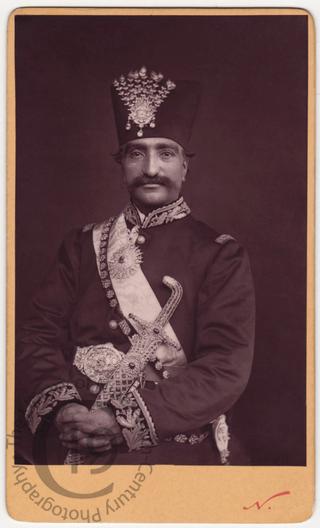
The Shah of Persia
A carte-de-visite portrait of Nasir-al-Din, the ruler of Persia (modern-day Iran) who ascended the Peacock Throne in 1848 at the age of eighteen and ruled as Shah-in-Shah (King of Kings) until he was assassinated in 1896.
Following his succession of his father Mohammed Shah, Nasir-al-Din initially followed a policy of reform but became increasingly conservative. Although he curbed the power of the clergy in secular affairs, introduced telegraph and postal services, opened the first school offering education along Western lines, opened the first railway and launched Persia’s first newspaper, later in his reign he steadfastly refused to deal with mounting pressure for more far-reaching reform.
He was also the titular head of a considerable part of the Muslim world. In a country of eight million, nine-tenths of these were Shiite Muslims who looked to him as the legitimate successor and Vice-Regent of the Prophet. Demanding implicit obedience, it was on account of his religious position that the Shah was able to exercise despotic power as a temporal ruler.
An absolute ruler, as supreme master of the lives and property of all his subjects, the entire revenues of all the Empire were at his disposal. Since taxation was severe and arbitrary, he was able to amass a vast personal fortune, and an enormous collection of historic diamonds. Nevertheless, he still ran up a huge national debt, partly as a result of his expensive foreign tours.
Photographed by Nadar of Paris.
Code: 125315




